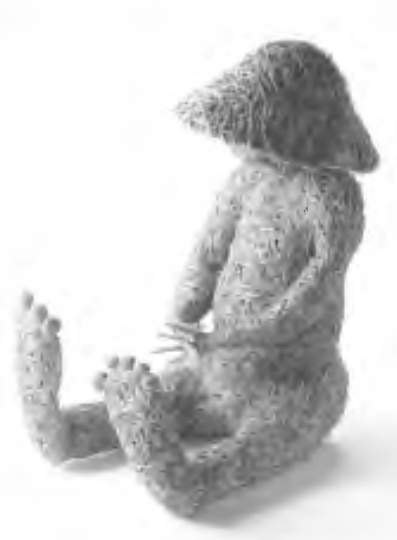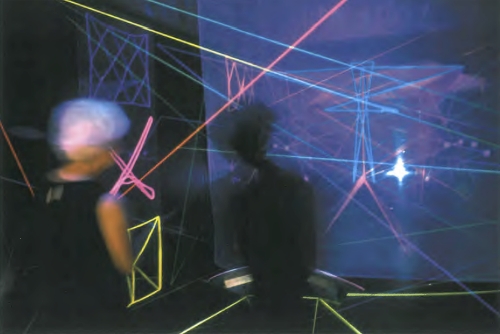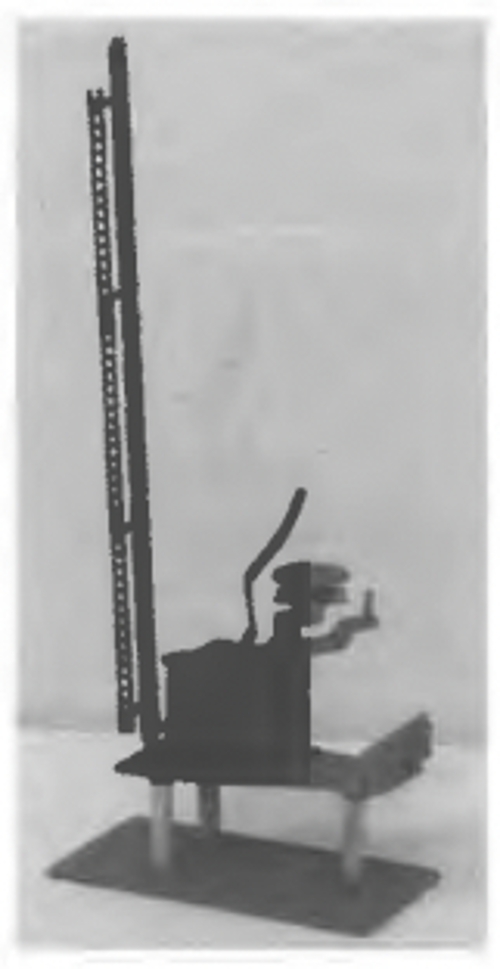
"I would never have thought that I could ever be making interesting things out of sticks and grass which just lay along the side of the road...." Joyce Winsley set a precedent for her practice as a unique fibre artist when she made an 'arthritic arm' from stitched wild grass, a twisted piece of found wandoo wood that seemed to resemble how her own painful shoulder felt.
On one of my visits to Narrogin she asked me the question "do you think I could make a meat-safe from grass?" Cecile Williams and I had been encouraging Joyce and we replied "you can make anything you want to from grass!" and so she did.
Joyce Winsley died unexpectedly in July and her passing is a great loss to both the Indigenous arts and the fibre textile community nationally and in regional WA. She visited friends and family constantly and was always teaching and encouraging others. A child of the Stolen Generation who suffered deeply from that experience, she came to the visual arts late in life. She was one of the Noongar women who formed a craft group in Narrogin that quickly gained state and then national profile. Her sisters and other women relations were all involved.
However it was Joyce who developed singular skill in the use of the wild Guildford grass which is endemic to the WA wheatbelt. She gathered the annual grass in the summer and then through a process of crushing and rolling she shaped her forms using endless invisible stitches, a slow and careful procedure as the shape developed. She would add on or shave off until she was satisfied.
Her final grass sculpture, completed for the 2001 Telstra Indigenous Art Awards at the Museum and Art Gallery of the NT, was the Didgeridoo Player. A sitting man with legs extended and a didgeridoo resting on his crossed feet. She laughed when she showed it to me ... "that's the first time I've made lips like that". The Frilled Neck Lizard, Mamurie Man, Bush Boy, Mother and Baby, Granny Bass, Baby in the Coolamon, Church Lady, the Chinaman, the StoryTeller, all fascinating in the mystery of how they existed with such presence. Most of them are now in public and private collections.
The Adelaide Festival exhibition Beyond The Pale, 2000 included seven Winsley figures. Doreen Mellor writing in the catalogue for that exhibition states:
"Joyce Winsley melds grasses together to make forms that represent well remembered people or spirits. When talking about her work she will reminisce about the person depicted and the making of the work assists her in keeping this memory alive. As a child Joyce was put into a Mission, dressed in white peoples' clothes and separated from family members although she was in contact with her brothers. Her work is a way of reclaiming her culture."
The work titled Granny Bass depicted a little old lady that Joyce knew ... she kept a lot of dogs. She would visit this lady and remembered her friendliness. She was apparently very dark, very slim and well spoken, she did not smoke and white people also had a great regard for her. Joyce spoke recently of some land being given back to Aboriginal people and held out hope that one day she could roam again as she once did – across the landscape without fences stopping her. She lamented that she could not just lie down anywhere and camp and rest.
The author Eric Rolls, talking to Vivonne Thwaites about Chinaman provided this information ... "The Chinese in Narrogin (Gnowangerup) were probably gardeners, their main occupation in Western Australia which forbade them the Goldfields even as cooks. This strange little man would have been brought in by a clansman under the obligation to care for him." In February this year Joyce recalled this poem from childhood associated with the Chinaman which was probably the stimulus for his making. Joyce also mentioned that her mother's mother was Chinese "from Ceduna way."
Once in China there lived an old man
His name was Chingeracka Chew Chi Chan
His legs were short and his feet were long
This little man he couldn't walk at all
Singing Chingeracka Chew Chi Chan
Cocka Laura Mirrettee Man
Tanka took why
Atta katta kiss a pie
Add a piece add a pie
Mirrettee Man
"This song we used to sing to all our children. Today we're still singing it to my grandchildren and great-grandchildren, who knows he couldn't walk, but he could have been a famous writer or a painter. Who knows."












